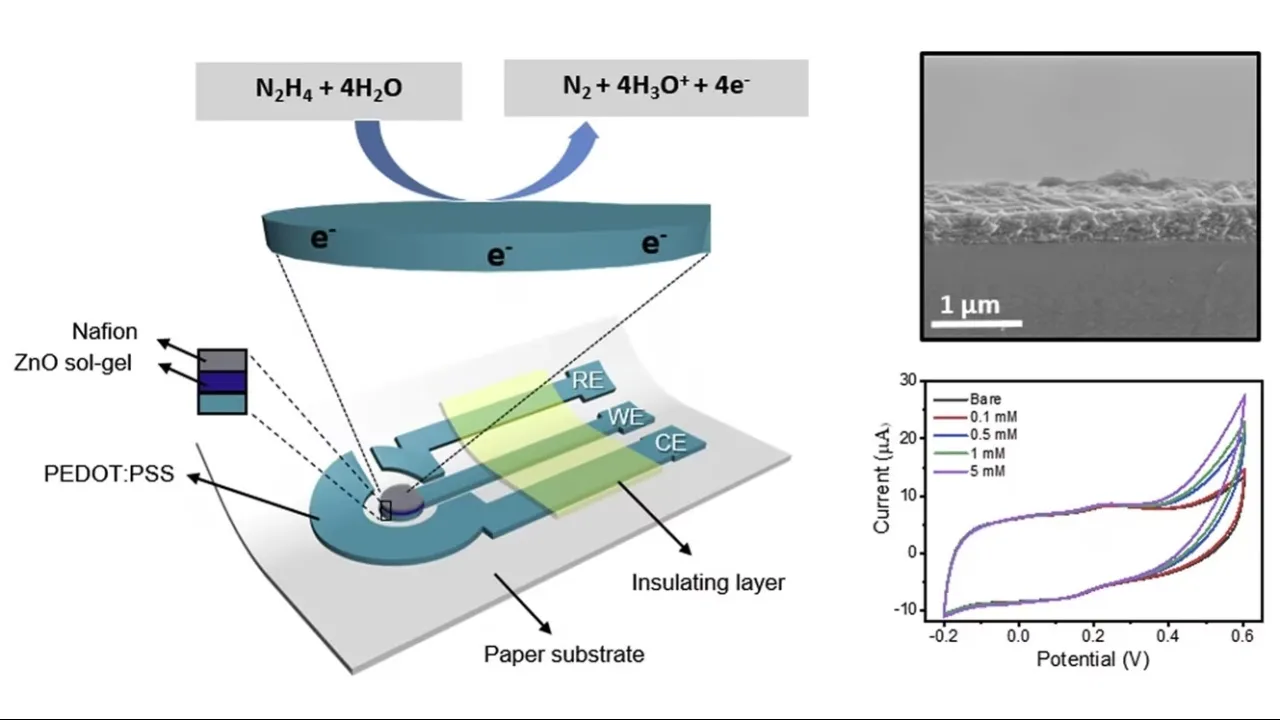
A Paper-based Inkjet-printed PEDOT: PSS/ZnO Sol-gel Hydrazine Sensor
About
Tutku Beduk, et al., "A Paper-based Inkjet-printed PEDOT: PSS/ZnO Sol-gel Hydrazine Sensor." Sensors and Actuators B: Chemical 306, 2020, 127539.
Hydrazine is widely used in industries as a precursor for blowing agents, pharmaceuticals, and pesticides. It is a highly toxic compound; therefore, it is of paramount interest to develop new analytical methods for the detection and control of hydrazine exposure. In this work, we describe the fabrication of an all inkjet-printed paper sensor composed of poly(3,4-ethylenedioxythiophene):poly(styrene sulfonate) (PEDOT:PSS) electrode functionalized with zinc oxide (ZnO) and encapsulated in a Nafion matrix for the amperometric determination of low concentrations of hydrazine. The electrochemical properties of the fully inkjet-printed PEDOT:PSS/Nafion and PEDOT:PSS/ZnO/Nafion sensors are compared in the presence and absence of different concentrations of hydrazine. The stability and sensitivity of these electrodes are significantly enhanced after modification with ZnO particles. The layer-by-layer deposition of the materials on the electrode surface is characterized by SEM, XRD, and AFM. The printed sensor exhibits a linear response in the 10–500 μM hydrazine concentration range and a ∼5 μM detection limit (at S/N = 3). The electrochemical sensitivity is 0.14 μA μM−1 cm−2, and the best working voltage is 0.5 V. The developed sensor was applied successfully for the determination of hydrazine content in tap, sea, and mineral water samples validating the accuracy of this sensor.